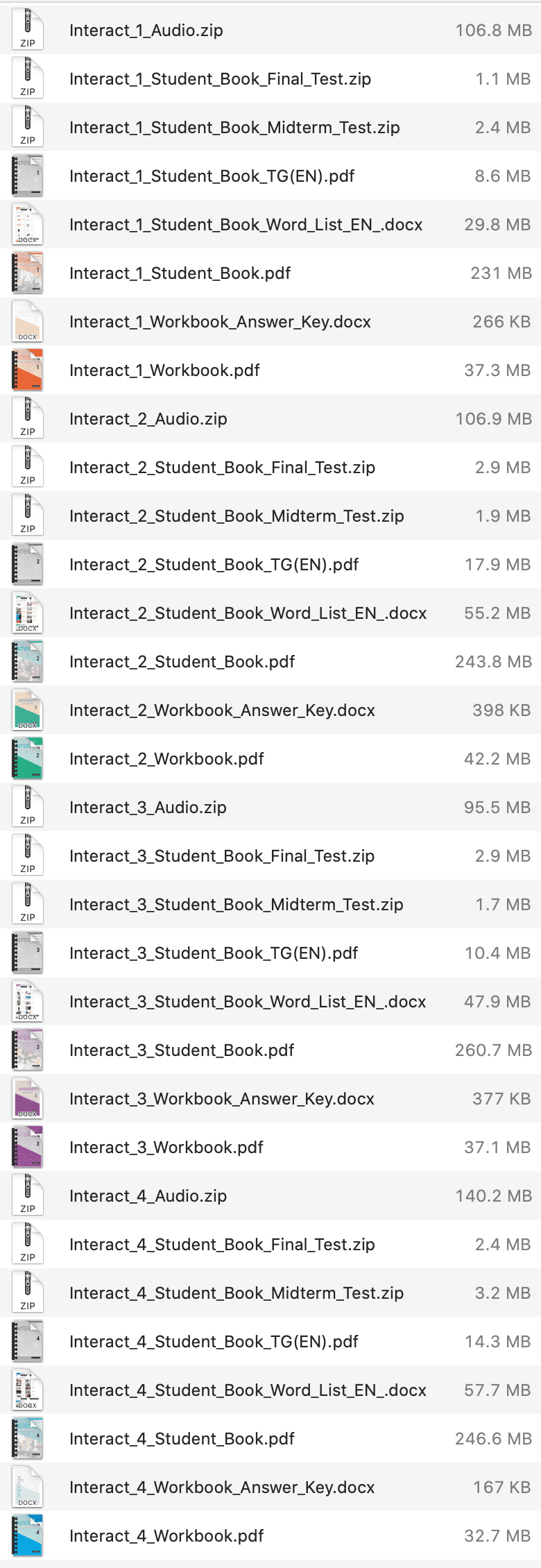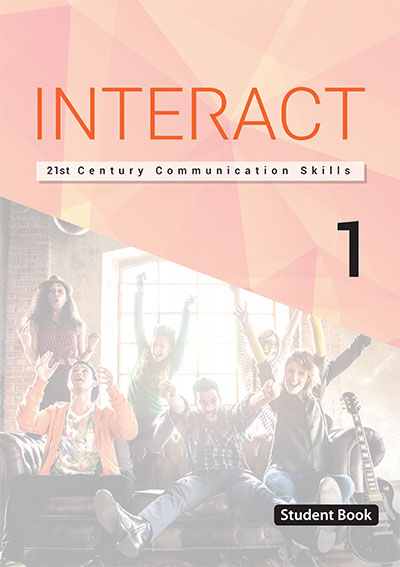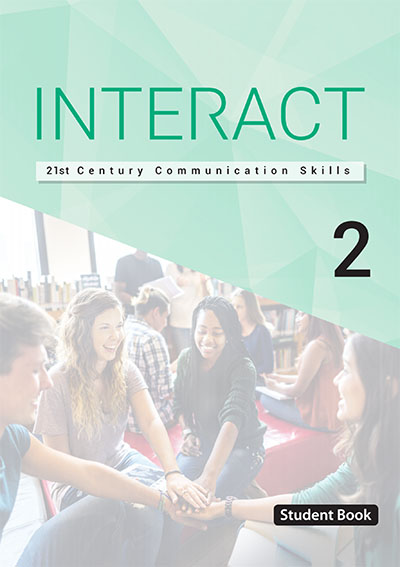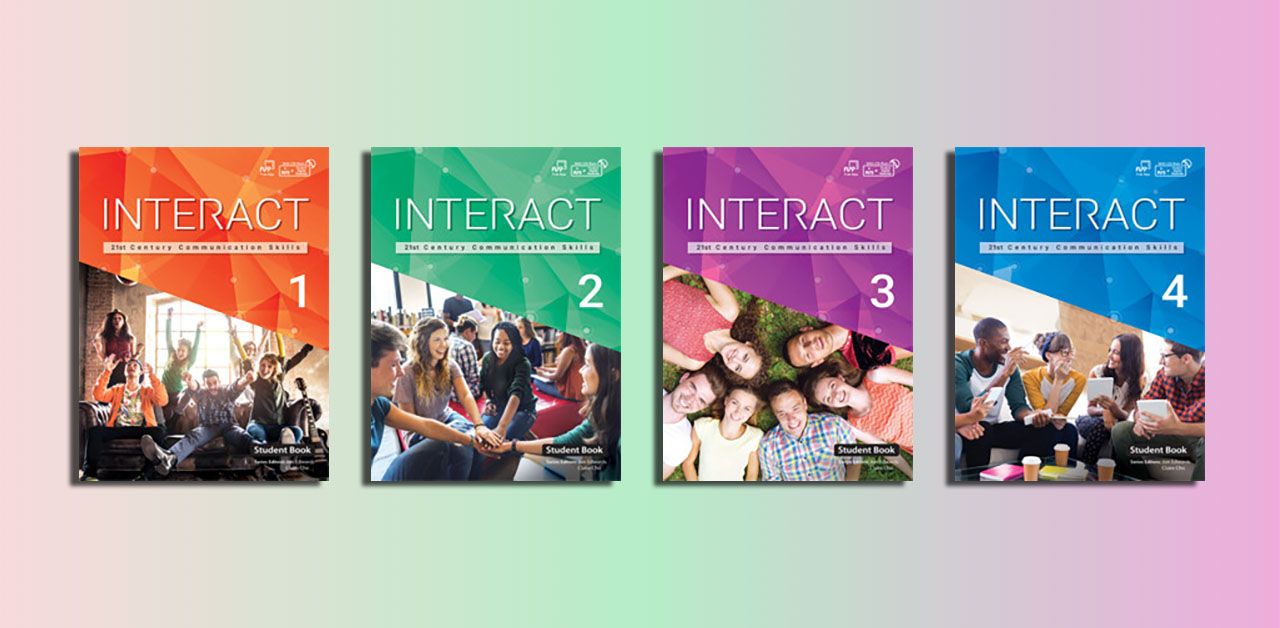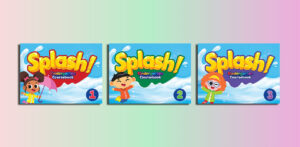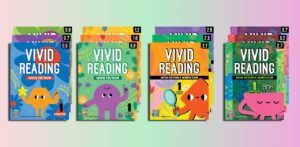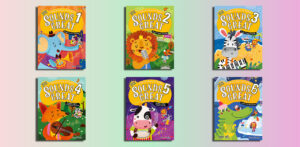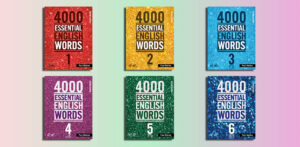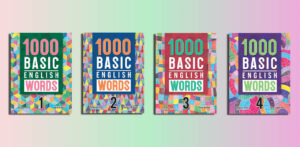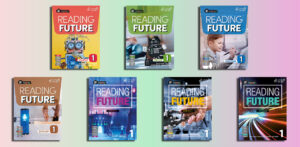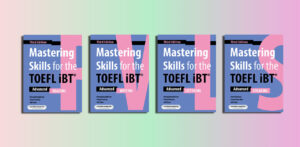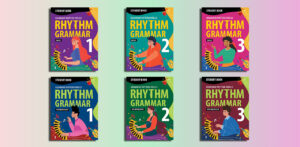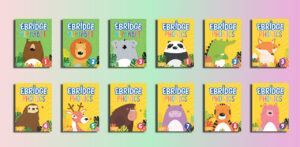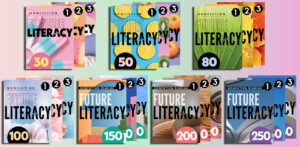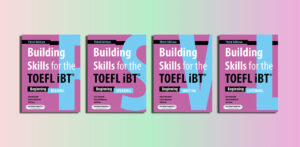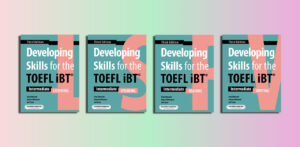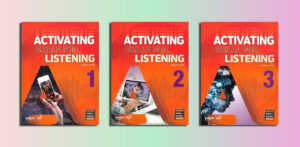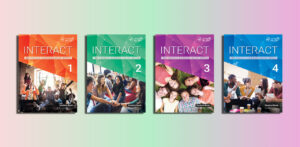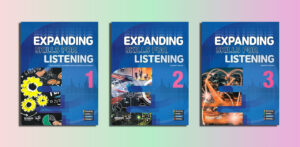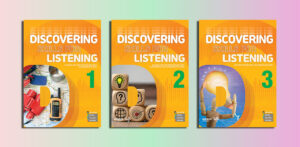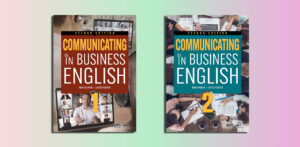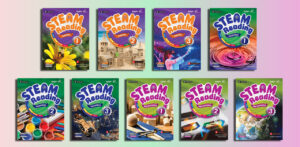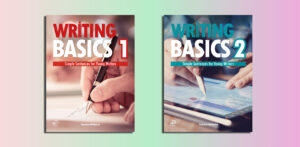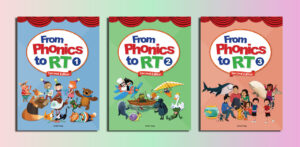Interact (PDFs, Resources)
Level 1 (A1)
Audio – Final Test – Midterm Test – TG – Word List – Student Book – Workbook Answer Key – Workbook
Interact 1 Student Book.pdf – Sample: Click
Interact 1 Workbook.pdf – Sample: Click
Level 2 (A2)
Audio – Final Test – Midterm Test – TG – Word List – Student Book – Workbook Answer Key – Workbook
Interact 2 Student Book.pdf – Sample: Click
Interact 2 Workbook.pdf – Sample: Click
Level 3 (B1)
Audio – Final Test – Midterm Test – TG – Word List – Student Book – Workbook Answer Key – Workbook
Interact 3 Student Book.pdf – Sample: Click
Interact 3 Workbook.pdf – Sample: Click
Level 4 (B2)
Audio – Final Test – Midterm Test – TG – Word List – Student Book – Workbook Answer Key – Workbook
Interact 4 Student Book.pdf – Sample: Click
Interact 4 Workbook.pdf – Sample: Click
| Image | Name | Price | Buy |
|---|---|---|---|
| Interact 1 (PDFs, Resources) | $8 | ||
| Interact 2 (PDFs, Resources) | $8 | ||
| Interact 3 (PDFs, Resources) | $8 | ||
| Interact 4 (PDFs, Resources) | $8 | ||
| Interact - All 4 Levels (PDFs, Resources) | $28 |
Overview of the “Interact” by Compass Publishing
Contents
| ✅ Coursebook: | Interact |
| ✅ Authors: | Richard O’Neill, Stephen Rowley |
| ✅ Publisher: | Compass Publishing |
| ✅ English type: | International English |
| ✅ Levels: | A1, A2, B1, B2 |
| ✅ Skill: | Reading, Writing, Listening, Speaking |
| ✅ For: | Adult, High School |
| ✅ Publication year: | 2020 |
The “Interact” series is a standout communicative course designed to build English fluency for learners from beginner to upper-intermediate levels. Aligned with the Common European Framework of Reference (CEFR), the series comprises four levels: Level 1 (A1), Level 2 (A2), Level 3 (B1), and Level 4 (B2). This article explores the “Interact” series, detailing its structure, features, and benefits for students and educators.
What is the “Interact” Series?
“Interact” is a four-level communicative language course tailored for adult and young adult learners, emphasizing practical English skills in real-world contexts. It fosters fluency through engaging content, modern design, and collaborative activities, making it ideal for learners from beginner (A1) to upper-intermediate (B2) proficiency. The series balances listening, speaking, reading, and writing skills while promoting creativity, critical thinking, and teamwork—essential competencies for 21st-century learners.
Each level includes a Student Book, Workbook, Teacher’s Guide, audio materials, word lists, workbook answer keys, midterm and final tests, and downloadable PDFs, ensuring comprehensive support for both classroom and self-study environments.
Key Features of “Interact”
1. Communication-Focused Approach
- “Interact” prioritizes practical communication, with lessons centered on everyday scenarios such as introducing oneself (Level 1, A1), discussing preferences (Level 2, A2), debating opinions (Level 3, B1), or navigating complex social situations (Level 4, B2). Speaking practice builds incrementally, boosting fluency and confidence. Listening activities expose learners to diverse accents and colloquial expressions, enhancing comprehension across all levels.
2. Integrated-Skill Activities
- The series integrates listening, speaking, reading, and writing within each lesson, ensuring balanced skill development. Activities transition from individual tasks to pair- and group-work, fostering collaboration. For example, A1 learners might practice basic greetings in group dialogues, while B2 learners analyze texts and debate ideas, reflecting the series’ progressive complexity.
3. Global Perspective and Engaging Content
- “Interact” incorporates culturally diverse topics and modern themes, from daily routines (A1) to global issues (B2), resonating with learners worldwide. The visually appealing design keeps students motivated, while relevant content prepares them for international communication.
4. Clear Language Focus
- Each level introduces grammar and vocabulary in context, with clear explanations and exercises tailored to the CEFR level. For instance, Level 1 (A1) covers basic sentence structures, while Level 4 (B2) tackles advanced grammar like conditionals. Vocabulary progresses from high-frequency words to nuanced expressions, supporting practical communication.
5. Digital and Mobile Support
- Compass Publishing enhances “Interact” with digital tools, including audio resources and downloadable materials. Previously, mobile apps like Interact 1 and Interact 2 (merged into the BIGBOX app post-June 2020) allowed mobile learning and progress tracking. These features ensure flexibility for both in-class and remote learning.
6. Assessment and Support Materials
- Each level offers midterm and final tests to track progress, alongside workbook answer keys and word lists for independent study. The Teacher’s Guide provides detailed lesson plans, enabling educators to tailor instruction to A1–B2 learners’ needs.
Structure and Availability
The “Interact” series spans four levels, each with 12 units covering diverse topics and skills:
- Level 1 (A1): Foundational English for beginners, focusing on basic vocabulary and grammar.
- Level 2 (A2): Elementary skills, introducing more complex structures and conversations.
- Level 3 (B1): Intermediate proficiency, emphasizing fluency and critical thinking.
- Level 4 (B2): Upper-intermediate skills, preparing learners for advanced communication.
Audio resources, such as unit playlists for Level 1 and Level 4, are accessible on platforms like SoundCloud. The series is distributed globally, with partners like LA Books in Poland.
Conclusion
The “Interact” series by Compass Publishing is a robust ELT resource for learners from A1 to B2, blending practical communication with engaging, modern content. Its integrated-skill approach, digital support, and comprehensive resources make it ideal for classrooms and self-study. By fostering fluency, confidence, and critical thinking, “Interact” empowers learners to thrive in a globalized world.
Interact 1 Student Book
Who is suitable for “Interact”?
The “Interact” series by Compass Publishing is suitable for:
- Adult and Young Adult Learners: Designed for learners aged 16 and older, including college students, professionals, and lifelong learners seeking to improve their English fluency.
- English Language Learners (ELLs) from Beginner to Upper-Intermediate Levels: Aligned with CEFR levels, it caters to:
- Level 1 (A1): Beginners learning basic vocabulary and grammar.
- Level 2 (A2): Elementary learners building conversational skills.
- Level 3 (B1): Intermediate learners aiming for fluency and confidence.
- Level 4 (B2): Upper-intermediate learners refining advanced communication.
- Students Seeking Practical Communication Skills: Ideal for those who want to use English in real-world contexts, such as social interactions, travel, or workplace communication.
- Classroom and Self-Study Learners: Suited for guided instruction in language schools or independent study, thanks to its comprehensive resources (Student Book, Workbook, audio materials, and digital tools).
- Learners Interested in Global Perspectives: The series’ culturally diverse topics appeal to those preparing for international environments.
- Educators and Institutions: Teachers in ELT programs benefit from the series’ Teacher’s Guide, assessments, and digital support, making it suitable for structured courses.
“Interact” is perfect for motivated learners and educators seeking a communicative, engaging, and flexible English course that fosters fluency, collaboration, and critical thinking.
Interact 2 Student Book
The benefits of “Interact”
The “Interact” series by Compass Publishing offers numerous benefits for both learners and educators, making it a standout choice for English Language Teaching (ELT). Below are the key benefits, tailored to its communicative approach and CEFR-aligned levels (Level 1: A1, Level 2: A2, Level 3: B1, Level 4: B2).
Benefits for Learners
Enhanced Fluency and Confidence:
- Incremental speaking tasks, from basic greetings (A1) to complex discussions (B2), help learners build fluency and reduce anxiety around speaking.
- Real-world scenarios, like ordering food (A2) or debating opinions (B2), foster confidence in practical communication.
Real-World Relevance:
- Topics reflect everyday life and global issues, such as daily routines (A1) or cultural discussions (B2), preparing learners for social, academic, or professional interactions.
- Exposure to diverse accents and colloquial expressions in listening activities enhances comprehension in authentic settings.
Holistic Skill Development:
- Integrated activities combine listening, speaking, reading, and writing, ensuring balanced proficiency across all language skills.
- Collaborative tasks, like group discussions, promote teamwork and communication skills, aligning with 21st-century learning goals.
Engaging and Motivating Content:
- Modern, aesthetically appealing design keeps learners motivated.
- Culturally diverse and relevant topics resonate with adult and young adult learners, maintaining engagement across all levels.
Flexible Learning Options:
- Digital tools, including audio resources and downloadable PDFs, support both classroom and self-study.
- Previous mobile apps (e.g., Interact 1 and 2, now part of BIGBOX) enabled on-the-go learning, with progress-tracking features.
Benefits for Educators
Comprehensive Teaching Resources:
- The Teacher’s Guide provides detailed lesson plans, teaching strategies, and activities tailored to A1–B2 learners, simplifying preparation.
- Midterm and final tests, workbook answer keys, and word lists streamline assessment and support student progress tracking.
Flexible Delivery:
- Downloadable materials and digital audio resources accommodate both in-person and remote teaching environments.
- The series’ structure supports varied class formats, from small groups to large classrooms.
Student-Centered Design:
- Collaborative and interactive activities align with modern pedagogical approaches, fostering critical thinking and engagement.
- Clear grammar and vocabulary instruction, contextualized for each level, ensures students meet learning objectives.
Adaptability to Diverse Learners:
- The series’ global perspective and leveled content (A1–B2) cater to diverse student needs, from beginners to advanced learners.
- Activities can be adapted for different proficiency levels within a class, supporting differentiated instruction.
Overall Benefits
- Structured Progression: The four-level structure ensures a clear learning path, with each level building on the previous one to achieve measurable outcomes.
- 21st-Century Skills: Beyond language, “Interact” fosters creativity, collaboration, and critical thinking, preparing learners for global communication.
- Accessibility: Available globally through Compass Publishing and distributors like LA Books, with resources accessible via the official website.
In summary, “Interact” empowers learners with practical English skills, confidence, and global competence while providing educators with robust, flexible tools to deliver engaging, effective lessons.
Interact 3 Student Book
Effective learning strategies for “Interact”
To maximize the benefits of the “Interact” series by Compass Publishing (Level 1: A1, Level 2: A2, Level 3: B1, Level 4: B2), learners and educators can employ targeted strategies that leverage the series’ communicative, integrated-skill approach. Below are effective learning strategies tailored for students and teachers to enhance engagement, fluency, and retention.
Strategies for Learners
Engage Actively with Communicative Activities:
- Practice Speaking Regularly: Use the series’ real-world scenarios (e.g., greetings at A1 or debates at B2) to practice speaking with peers or in self-recorded dialogues. Role-play activities, like ordering food (A2), build confidence.
- Collaborate in Groups: Participate in pair- and group-work tasks to mimic real-life interactions, fostering fluency and teamwork skills.
Leverage Listening Resources:
- Listen Repeatedly: Access audio materials (available on platforms like SoundCloud) to familiarize yourself with diverse accents and speech patterns. For example, replay Level 1 Unit 1 audio to master basic phrases.
- Shadowing Technique: Repeat after audio recordings to improve pronunciation and intonation, especially for A1–A2 learners.
Integrate Skills Through Contextual Practice:
- Combine Skills: Follow the series’ integrated activities by reading a passage, discussing it orally, and writing a response. For instance, at B1, read a text on hobbies, discuss it with a partner, then write a short paragraph.
- Apply Grammar and Vocabulary: Use the contextual grammar and vocabulary exercises (e.g., present simple at A1 or conditionals at B2) in speaking and writing tasks to reinforce learning.
Utilize Digital and Mobile Tools:
- Access Downloadable PDFs: Review unit word lists and workbook exercises for self-study, reinforcing vocabulary and grammar.
- Use BIGBOX App (if available): Practice on-the-go with mobile exercises, especially for A1–A2 learners, to build consistency.
Set Clear Goals and Track Progress:
- Complete Assessments: Use midterm and final tests to gauge progress and identify areas for improvement.
- Self-Reflect: After each unit, note new words or phrases learned and practice them in daily conversations.
Immerse in Real-World Contexts:
- Apply Topics to Life: Relate unit themes (e.g., daily routines at A1 or global issues at B2) to personal experiences. For example, describe your schedule using A1 vocabulary.
- Seek Authentic Practice: Engage with English media (podcasts, videos) that align with unit topics to reinforce listening and vocabulary.
Strategies for Educators
Facilitate Interactive and Collaborative Lessons:
- Encourage Group Dynamics: Organize pair- and group-work for speaking tasks, such as role-plays or debates, to build communication skills. For B1–B2, assign discussion prompts like “Should technology replace books?”
- Use Scaffolding: Start with guided practice (e.g., model dialogues at A1) before moving to open-ended tasks, ensuring all learners participate.
Maximize Teacher’s Guide Resources:
- Follow Lesson Plans: Use the Teacher’s Guide for structured activities and tips tailored to each level, saving preparation time.
- Incorporate Assessments: Administer midterm and final tests to monitor progress and adjust instruction, especially for mixed-ability classes.
Leverage Digital and Audio Materials:
- Integrate Audio in Class: Play unit audio during lessons to model pronunciation and comprehension. For A2, pause audio to ask comprehension questions.
- Assign Digital Homework: Direct students to downloadable PDFs or audio for self-study, reinforcing classroom learning.
Differentiate Instruction:
- Adapt for Levels: Modify tasks for diverse proficiencies within a class. For example, simplify A1 writing tasks for struggling learners or challenge B2 students with extended debates.
- Provide Feedback: Offer specific feedback on grammar and pronunciation during speaking tasks, using workbook answer keys for accuracy.
Promote Critical Thinking and Creativity:
- Incorporate Discussions: Use B1–B2 topics (e.g., cultural differences) to spark critical thinking through open-ended questions.
- Encourage Creative Output: Assign projects like writing a blog post (B2) or creating a dialogue (A2) to apply language creatively.
Foster a Supportive Environment:
- Build Confidence: Create a low-pressure setting for speaking, especially for A1–A2 learners, by praising efforts and correcting gently.
- Set Clear Objectives: Share unit goals (e.g., mastering past tense at A2) to keep students focused and motivated.
Combined Strategies for Optimal Results
- Regular Review: Both learners and educators should revisit previous units to reinforce vocabulary and grammar, using workbook exercises or quick oral reviews.
- Personalized Practice: Learners can focus on weak areas (e.g., listening for A1 or writing for B2) with targeted workbook tasks, while teachers can assign extra practice based on test results.
- Cultural Engagement: Encourage exploration of the series’ global themes by connecting lessons to real-world events or media, enhancing relevance.
By combining these strategies, learners can fully engage with “Interact’s” communicative focus, while educators can deliver dynamic, effective lessons.
Interact 4 Student Book
Effective teaching strategies for “Interact”
The “Interact” series by Compass Publishing (Level 1: A1, Level 2: A2, Level 3: B1, Level 4: B2) is designed to foster communicative English skills through integrated activities and real-world contexts. To maximize its effectiveness, educators can employ targeted teaching strategies that leverage the series’ resources, align with its communicative approach, and cater to diverse learners. Below are effective teaching strategies for using “Interact” in the classroom, optimized for engagement, skill development, and measurable outcomes.
1. Facilitate Interactive and Collaborative Learning
- Promote Pair- and Group-Work: Utilize the series’ collaborative activities, such as role-plays (e.g., ordering food at A2) or debates (e.g., technology’s impact at B2), to encourage authentic communication. Assign roles to ensure all students participate, especially shy A1–A2 learners.
- Use Think-Pair-Share: For discussion prompts (e.g., hobbies at B1), have students think individually, discuss with a partner, then share with the class to build confidence and fluency.
- Incorporate Scaffolding: Model dialogues or provide sentence starters for A1–A2 learners before transitioning to open-ended tasks, ensuring accessibility for all proficiency levels.
2. Leverage the Teacher’s Guide for Structured Lessons
- Follow Detailed Lesson Plans: Use the Teacher’s Guide to implement ready-made activities, teaching tips, and extension ideas tailored to each level (A1–B2). This saves preparation time and ensures alignment with learning objectives.
- Adapt Activities: Customize suggested tasks to suit class needs, such as simplifying A1 listening exercises for beginners or adding complexity to B2 writing prompts for advanced learners.
- Incorporate Warm-Ups and Wrap-Ups: Use the guide’s warm-up activities to activate prior knowledge (e.g., brainstorming daily routines at A1) and wrap-up tasks to consolidate learning (e.g., summarizing key vocabulary).
3. Integrate Digital and Audio Resources
- Use Audio Materials in Class: Play unit audio (available on platforms like SoundCloud) to model pronunciation and enhance listening skills. For A2, pause after key phrases to check comprehension or practice shadowing.
- Assign Digital Homework: Direct students to downloadable PDFs (e.g., word lists, workbook exercises) for self-study, reinforcing classroom lessons. For B1–B2, assign listening tasks to prepare for discussions.
4. Differentiate Instruction for Diverse Learners
- Tailor Tasks to Proficiency Levels: In mixed-ability classes, modify activities to challenge stronger students (e.g., extended B2 debates) while supporting weaker ones (e.g., guided A1 dialogues). Provide extra workbook exercises for reinforcement.
- Use Tiered Questions: For reading or listening tasks, ask basic comprehension questions for A1–A2 (e.g., “What is the main idea?”) and analytical questions for B1–B2 (e.g., “Why does the speaker feel this way?”).
- Offer Choice: Allow students to select tasks within a unit, such as writing a letter or creating a dialogue at B1, to increase engagement and ownership.
5. Foster Critical Thinking and Creativity
- Encourage Open-Ended Discussions: Use B1–B2 topics (e.g., cultural differences or global issues) to spark critical thinking. Pose questions like “How does culture affect communication?” to stimulate analysis.
- Assign Creative Projects: Have students apply unit content creatively, such as writing a blog post (B2) about a global topic or designing a poster (A2) about daily routines, to deepen engagement.
- Incorporate Problem-Solving: Use scenarios (e.g., planning a trip at B1) to encourage collaborative problem-solving, integrating language skills with critical thinking.
6. Provide Targeted Feedback and Assessment
- Offer Constructive Feedback: During speaking tasks, provide specific feedback on pronunciation, grammar, or fluency, balancing praise with corrections. For A1, focus on clarity; for B2, refine accuracy and complexity.
- Use Assessments Strategically: Administer midterm and final tests to track progress and identify areas for review. Use workbook answer keys to ensure consistency in grading.
- Encourage Self-Assessment: Have students reflect on their progress after units, using checklists (e.g., “Can I describe my hobbies?” at A2) to set personal goals.
7. Create a Supportive and Engaging Classroom Environment
- Build Confidence: Foster a low-pressure setting for speaking, especially for A1–A2 learners, by praising efforts and using positive reinforcement. Pair stronger and weaker students for peer support.
- Make Lessons Relevant: Connect unit themes to students’ lives (e.g., A1 daily routines or B2 workplace scenarios) to increase motivation and practical application.
- Use Visual and Kinesthetic Aids: Supplement the series’ appealing design with visuals (e.g., flashcards for A1 vocabulary) or kinesthetic activities (e.g., acting out A2 dialogues) to engage diverse learners.
8. Promote Consistent Review and Reinforcement
- Revisit Prior Content: Start lessons with quick reviews of previous units’ vocabulary or grammar (e.g., past tense at A2) to reinforce retention.
- Incorporate Spiraled Learning: Reintroduce earlier concepts in later units (e.g., basic questions from A1 in B1 contexts) to build cumulative proficiency.
- Assign Regular Practice: Use workbook exercises or audio tasks as homework to maintain consistent exposure, particularly for slower-progressing students.
9. Align with 21st-Century Skills
- Emphasize Collaboration: Structure group tasks to develop teamwork, a key focus of “Interact,” such as planning a group presentation at B2.
- Integrate Technology: Use digital tools to teach digital literacy, like researching a B1 topic online or recording A2 dialogues for self-review.
- Foster Global Competence: Highlight the series’ global themes (e.g., cultural diversity at B2) to prepare students for international communication.
Implementation Tips
- Set Clear Objectives: Share unit goals (e.g., “Use present simple to describe routines” at A1) to focus students and align activities.
- Balance Structure and Flexibility: Follow the Teacher’s Guide for consistency but adapt pacing based on class needs, such as spending extra time on A1 listening for beginners.
- Engage with Compass Resources: Access demo PDFs, audio playlists, and support materials via Compass Publishing’s website to enhance lessons.
By implementing these strategies, educators can fully harness “Interact’s” communicative focus, comprehensive resources, and modern design to deliver engaging, effective lessons that foster fluency, confidence, and critical thinking across A1–B2 learners.

